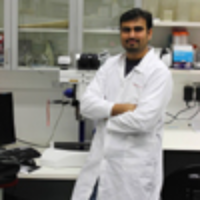Survival of Free and Encapsulated Probiotics in Healthy Gummy Candy as a Carrier for Probiotic Capsules
Published on: 1st October, 2024
Probiotic gummy candy is an innovative food that can be used as a carrier to deliver probiotics. This study aimed to manufacture healthy gummy candy (HGC) as a carrier for probiotic capsules. The ingredients' effect on the viability of probiotic capsules and free cells was evaluated for 48 days under refrigerated conditions. Also, the textural properties, overall acceptability of products, and physicochemical properties were tested. The encapsulation probiotics in sodium alginate and chitosan provided a high efficiency of 88.16%. At the same time, the encapsulated cells-based HGC (HGC-C) had higher counts of probiotics than free cells-based HGC, and it remained above the 3 log CFU/g at the end of the 48-day storage period in HGC-C, while the free cells reached zero at 30 days. The HGC product showed a low hardness value and high antioxidant capacity as well as, and the colour coordinates for the product showed more yellow, with an intense red colour. Using mango pulp and probiotics in gummy candies is an innovative and viable alternative to the confectionery industry; therefore, combining fruits as a source of prebiotics and probiotic bacteria could be a promising formula for probiotics gummy supplement preparation.
Multipurpose Antioxidants based on Food Industry Waste: Production and Properties Evaluation
Published on: 20th June, 2025
Some preliminary results of studies on the assessment of the possibilities and prospects for obtaining products with a high Antioxidant Activity Index (AOA) from the waste of the coffee beverage production industry - "silver skin" (SC, silverskin, CS) are presented.The obtained data on the extraction of SC with aqueous-alcoholic extractants, the effect of extraction conditions on the yield of extracts, and extractive substances are discussed. It is reported on the production of dry powders of extracts that retain their properties during long-term storage.Data on the antioxidant properties of both liquid and dry forms of extracts are presented and good AOA of the studied objects is noted in comparison with the "standard" antioxidant - rosemary extract, and it is also shown that the AOA of dry forms of extracts can be increased by doping with synergists - polyphenols of natural genesis. The antioxidant activity of the obtained compositions was studied on real objects - animal fats and natural dyes, the results of which confirmed the prospects of the studied antioxidants (AO) for practical purposes.




